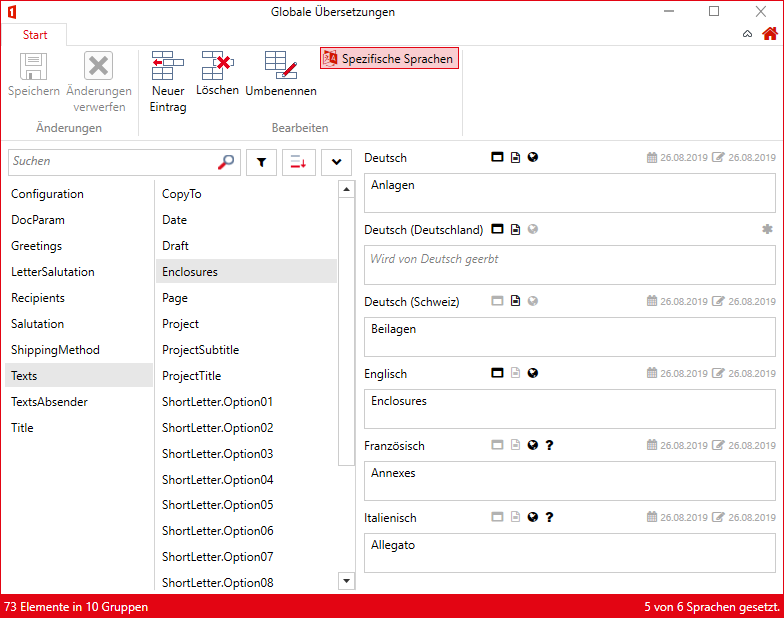Global Translations
All language-dependent texts (translations) that can be linked in XML configurations are stored in the Global Translations.
References
The translations are located in data sets (data tag), which in turn are located in groups (group tag). The content in a data set is linked in a configuration according to the following pattern:
{D/U[GroupName.DataName]}.
The language may depend on:
- Document language → "D" →
{D[GroupName.DataName]} - UI language → "U" →
{U[GroupName.DataName]}
Example
The globally stored record "Texts.Enclosures" contains different values depending on the language:

The translated "Texts.Enclosures" record can now be linked in all XML configurations of the document functions. For example, in an enclosure script in the "Scripts" document function:
<CustomDataNode id="Enclosures">
<Line>
<Text>{D[Texts.Enclosures]}:</Text>
</Line>
<Line>
<Element id="DocParam.Enclosures" linePrefix="–	" />
</Line>
</CustomDataNode>
{D[Texts.Enclosures]} is now replaced with "Anlagen", "Beilagen", "Enclosures", "Annexes" or "Allegato" respectively, depending on the document language.
Translated texts cannot be inserted directly into templates.
In order for the texts to be used in the template, the references must always be inserted into a script. Example of a script that provides the translated text "Texts.Enclosures":
<CustomDataNode id="Texts.Enclosures">
<Text>{D[Texts.Enclosures]}:</Text>
</CustomDataNode>